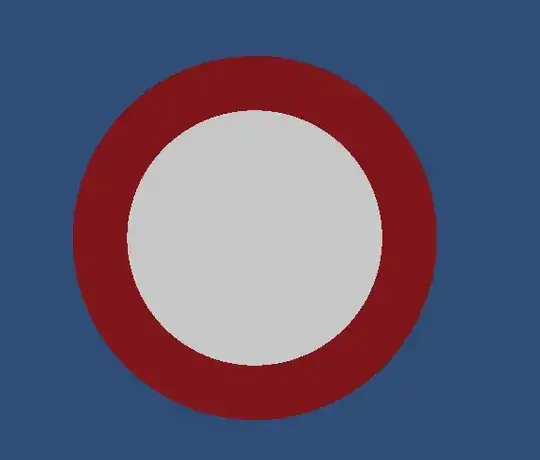I made a circle shader by following this tutorial: https://www.youtube.com/watch?v=Ww1GbfnBH_Q. It is simple flat circle shader. The problem is that there are visible jigged lines on the circle edges. Here is how it looks:

And here is shader code:
Shader "Custom/CircleShader"
{
Properties {
_ForegroundColor("Foreground Color", Color) = (1,1,1,1)
_BackgroundColor("Background Color", Color) = (0,0,0,1)
_ForegroundMask ("Foreground Mask", 2D) = "white" {}
_ForegroundCutoff ("Foreground Cutoff", Range(0,1)) = 0.5
_BackgroundCutoff("Background Cutoff", Range(0,1)) = 0.5
}
SubShader {
Tags { "RenderType"="Transparent" }
Blend SrcAlpha OneMinusSrcAlpha
LOD 200
CGPROGRAM
// Physically based Standard lighting model, and enable shadows on all light types
#pragma surface surf Standard fullforwardshadows keepalpha
// Use shader model 3.0 target, to get nicer looking lighting
#pragma target 3.0
sampler2D _ForegroundMask;
struct Input {
float2 uv_ForegroundMask;
};
fixed4 _ForegroundColor;
fixed4 _BackgroundColor;
half _ForegroundCutoff;
half _BackgroundCutoff;
void surf (Input IN, inout SurfaceOutputStandard o) {
fixed x = (-0.5 + IN.uv_ForegroundMask.x) * 2;
fixed y = (-0.5 + IN.uv_ForegroundMask.y) * 2;
// Albedo comes from a texture tinted by color
fixed radius = 1 - sqrt(x*x + y*y);
clip(radius - _BackgroundCutoff);
o.Albedo = _BackgroundColor;
if (radius > _ForegroundCutoff) {
o.Albedo = _ForegroundColor;
}
o.Alpha = 1;
}
ENDCG
}
FallBack "Diffuse"
}
How would I add antialiasing to the shader to remove jigged lines on edges of the circle?